|
Animal shelter reform advocacy is tough work. It can consume every day of the week with no days off. It can lead to the loss of long-time contacts and even some people we once considered friends. It can be mentally exhausting as common-sense principles are shared with people who are so personally invested in the status quo that they would rather continue ending the lives of healthy and treatable animals than listen. Just listen. It can be emotionally draining as those intent on defending the killing focus not on the message but on the messenger, as if they are somehow responsible for the fact that the words "please stop killing healthy and treatable animals" have to be said in the first place. I first began advocating for animal shelter reform in 2006 after the loss of our dog Snake. We had her euthanized to keep her from suffering. We know exactly what the word "euthanasia" means so when I learned almost 20 years ago that healthy and treatable animals were being killed in places called "shelters" and they were calling it euthanasia, I knew that was all kinds of wrong. Almost 20 years into this venture, I continue to learn more with the passage of time and I have had my mind changed on some subjects along the way as I have educated myself or been educated by others. I am fully capable of saying, "I was wrong. Thank you for helping me see a new point of view." I have heard before that advocacy to try to reform animal shelters is a marathon and not a sprint. To the extent we talk about national trends, I fully agree with that statement. Times change, people change, values change. In the 1970s, shelters were ending the lives of some 16 to 17 million animals each year. Let that one sink in. 16 to 17 million. By the end of the 1990s that number was down to about 7 to 8 million. It is now less than 1 million animals each year which is still way too many. As is the case with many social movements in our country, change never happens as fast as we would like as it can take decades to see progress. We do best to keep ourselves updated not only on the latest methods being used at progressive animal shelters like the Lake County Florida Animal Shelter and the Humane Society of Fremont County in Colorado (which holds a dozen municipal contracts), but also on how some former leaders in our movement have lost their way and tried to take the public with them. It is hard enough to try to persuade antiquated shelter systems to change. That process is made twice as hard when people lose sight of what works well and instead focus on their own form of celebrity as advocates. Dangerous things can happen for our communities and the animals we love when conversations best shared over too many glasses of wine are instead put forth as viable operational methods. When it comes to local advocacy, I've had a change of heart as it relates to the "sprint not a marathon" description. It is neither, at least in my world. I had my first meeting with the mayor of the city in which I work in January of 2009 after having written to him following the municipal election in 2008. I said, "we can do better" and he wanted to talk about that. When I was not able to affect change on my own after we met, I formed an advocacy coalition in January of 2012. We are in our 12th year of advocacy which has had mixed results. The most intense period of our advocacy began in 2013 after the city refused free help from subject matter experts and we took the issue to the public which was paying attention. We had the attention of the community, a large following on social media and our website and support from local television and print media. We held events, we sold t-shirts and car magnets, we rented electronic billboard space, and we got time on the local public radio station. We were on a roll. That intense period lasted through about 2018 when the city began making changes to the shelter operation and we finally saw improvement in the live release rate which had gone from 49% for dogs and 30% for cats in 2012 to 90% for dogs and 95% for cats in 2018. We knew the city could do even better so our advocacy continued as we promoted our first version of the Huntsville Animal Protection Act and kept pressure on city officials to hold them accountable. The city hit a high for the live release rates at the end of 2021 when the dog live release rate was 94% and it was 96% for cats. We felt pretty good about what we had accomplished even though it had been a very difficult time for all of us balancing advocacy with our jobs and our personal lives. As we feared may happen, the progress achieved was not sustained. The city was able to make some progress by embracing some programs we promoted, but never did fully embrace them all. We now see declines in the live release rate which each passing month. We don't believe a time will ever come when the city reverts to the amount of population control killing it engaged in when I first met with the mayor (33% for dogs and 13% for cats). At least we hope not. We have struggled as a group to stop this gradual decline and have ultimately come to the conclusion that we cannot. We led the horse to water and he had a drink, but he ultimately walked away and nothing we could do could force him to cooperate. We are currently promoting a new version of the HAPA, almost half of which relates to how the shelter makes decisions about "euthanasia" and "behavior dogs" but are not confident it will get much further than a corner of a desk in the city attorney's office. Our communication with members of the city council is more often than not met with replies to the effect that the shelter is doing all that it can to save animals when we know that is just not true. It is easy for any shelter to blame poor performance on the pandemic or the economy or some other issue but those excuses don't work in this particular city that continued to thrive during a 3-year public health crisis, has an incredibly low unemployment rate, was named the top place in the nation to live a year ago and was rated the second best place to live in the nation recently. All advocacy has value, but I have come to believe when it comes to local animal shelter reform advocacy, it is not a sprint or even a marathon. The passage of time takes a toll not only on the advocates themselves, but on the ability of city officials to hear us. In our last meeting with the city administrator last summer, he tolerated us at best and loathed us at worst, in spite of our attempts at diplomacy. Members of the city council who once applauded our efforts have less time - and no doubt less patience - for us as we repeat ourselves over and over, imploring the city to at least try the things we have been recommending in some cases for 10 years. Sometimes I feel like a child in the back seat of a car on a long ride asking, "are we there yet" Are we there yet? Are we there yet?" I stand by what we did because it worked. We were the impetus for change which could have and should have been sustained. I genuinely believe that but for our advocacy, little would have changed and the shelter would still be destroying about half of all animals entering the building.
Local animal shelter reform advocacy is a relay. We have carried the baton for more than a decade as others have tried to beat us with it. I now believe it is time for new voices to be heard whom we hope can build on what we tried to create. We will see the process through with the HAPA. If we can't get enough members of the city council on board after meeting with them for a year, we will have our answer. We know we cannot force the city to change through some form of magical thinking. Sometimes trying hard just is not enough. We wish those who follow in our footsteps the best. All communities are capable of becoming No Kill communities. But not all communities are ready. Enough people have to be angry enough to speak out about what they want from those who govern them and enough elected officials have to be able to listen. Just listen.
1 Comment
There are some articles related to the No Kill movement, particularly related to the phrase “No Kill,” which seem to be perpetual. They are shared, reshared and shared again years after the fact. A local contact of mine for whom I have a great deal of respect shared an article from 2021 recently which takes issue with the phrase “No Kill,” makes claims about open admission v. limited admission shelters and which endorses a sheltering philosophy called Socially Conscious Sheltering about which I have blogged before. I asked my contact for the opportunity to speak with her about the article and about SCS and have reached out to her so we can have that conversation. Much of the opposition to No Kill philosophies is founded on false information. It is not possible to respond to every article written in opposition to No Kill philosophies, but there are times when No Kill advocates need to speak out and be clear in an effort to educate the public. That is the purpose of this blog. The article shared by my contact is entitled, “Language Matters: The False Dichotomy of Kill/No Kill.” It was published on May 7, 2021, by Dr. Jennifer Woolf on a platform called VetzInsight. I’ll address just few things that caught my attention which I feel are most important. [The phrase “No Kill is] divisive and unnecessary. I disagree. To me, the phrase “No Kill” is informative. As Dr. Woolf notes in her article, language matters which means words matter. Shelters must use words the same way as they are used by the public. If I seek the help of my veterinarian to end the life of my geriatric dog to alleviate suffering, that is euthanasia. We do not say I killed my dog. If my healthy and treatable dog ends up in an animal shelter and his life is ended, that was not done for reasons of mercy. We cannot possibly say my dog was euthanized. My dog was killed. No Kill means that we don’t end the lives of healthy and treatable animals and that we use the word euthanasia according to the definition. When we call the deaths of healthy and treatable animals euthanasia, we undermine not only the value of those lives but of the lives of animals who were euthanized as an act of mercy and love. When we refer to a shelter as a No Kill shelter, that means the shelter does not end the lives of healthy and treatable animals. I am fully aware there are some shelters that claim No Kill status to garner public favor when they are not No Kill facilities. It is up to all of us to call out that co-option of the phrase "No Kill" when it happens. When people say the phrase “No Kill” is divisive, they are focusing more on the phrase than they are focused on the lives of animals. I fully promote use of the phrase No Kill because it is already on the public radar and it is not difficult to understand. Shelters are not “kill” and “no-kill." They are “open admission” and “limited admission." Shelters are kill and No Kill. If a shelter ends the lives of healthy and treatable animals for space or convenience, it is a kill shelter. If a shelter saves the lives of all healthy and treatable animals, it is a No Kill shelter. The description of shelters as open admission and limited admission has been the subject of much debate in animal sheltering and welfare circles for ages. People behave as if there are only two options: 1) to intake all animals regardless of source or circumstance; or 2) to limit the intake of animals. Talk about a false dichotomy. Many people believe that municipal animal shelters are open admission related to intake not only of animals found running at large (for which the shelter has a public safety function) but also of owned animals. Absent some contract to the contrary, municipal shelters are not obligated to take owned animals and should only do so on a managed basis - which is the third option: managed admission. Christie Keith wrote a blog on this subject years ago that I have shared many times because it is still relevant today. I quoted part of her blog in my book with Christie’s permission: A shelter or animal control agency that responsibly manages its intake flow is still an open admission shelter. Shelters that fulfill the legal or contractual requirements of their municipality as to what animals they are required to admit, and that additionally have provisions for emergency intake for animals in immediate need, are open admission shelters. But some folks simplified [the phrase "No Kill" to mean] stop euthanizing any pets. I have heard the argument many times that people think “No Kill” means no animals die. It is an argument most often used by people who oppose No Kill philosophies, accusing those of us in the no kill movement of advocating for animal suffering. In almost two decades of animal advocacy, I have never met with or interacted with any person who really thinks that shelters keep suffering animals alive and that no animals are ever euthanized. Of course they are. While they are ordinarily only a very small portion of any animal shelter census, there will always be animals in shelters who are either suffering or are irremediably ill for which euthanasia is the only option. The No Kill movement is one of compassion. The notion that animals would be allowed to suffer needlessly is absurd. The Animal Evaluation Matrix to which I have linked here is an extremely helpful guide related to euthanasia decision by shelters. Many municipal shelters are open admission. This means they take in all unwanted animals including the sick, the old, and the dangerous. In many cases, it also means they legally cannot turn away any animal. I personally know of no municipal animal shelter that is required to take every owned animal right this very minute. Cities and counties just don’t function that way. All cities control the amount of property taken from citizens because there are costs associated with those functions. (I know people object to the description of pets as property, but there are some legal advantages to that at this time in our history particularly related the ability of a municipality to seize animals from their caregivers). The word “unwanted” is also not helpful. Just because an animal ends up in a shelter does not mean that happens because no one wants them. More often than not it is because they got loose from the people who do love them and want them. In cases where people seek to surrender their animals to shelters, there are certain some heartless people who do so and should never have had the animal in the first place. The vast majority of people who seek to surrender an animal do so in desperation due to the combination of some life crisis and their inability to see another solution in the moment. When we see animal problems for what they are - people problems - we can help many people keep their pets by providing them with resources to do that or providing them alternatives to surrendering their pet. With regard to animals found running at large, there are some who are dangerous. This is ordinarily a very small percentage of the dogs entering shelters who may have some cognitive issue which causes their behavior to be unpredictable or makes them a genuine danger to the public. This is not the same, however, as dogs who are labeled as aggressive due to behavior created by the shelter environment itself which often overstimulates dogs and in which the people running the shelter expect those dogs to behave the same way they would outside of the building. On the other hand, many private shelters are limited admission. I would go one step further and stay that ALL private shelters, meaning nonprofit shelters which operate on donations and grants using mostly volunteer labor, are limited admission and for good reason. If a shelter receives no funding through tax dollars, has limited capacity to house animals and limited resources to care for those animals, it makes perfect sense to limit admission to just those animals for which the shelter can adequately provide care in order to function responsibly. In order to honor this relationship between open-admission and limited-admission shelters, there is a new movement towards socially conscious sheltering. It eliminates the false dichotomy of kill/no-kill. It suggests that we're all in this together. I have written about Socially Conscious Sheltering before and I will not cover that subject again here in depth. The foundation of SCS is the Five Freedoms that were developed for livestock and while there is nothing wrong with the freedoms in general, the problem is when the lives of animals are ended because the shelter failed to adequately provide an animal with a particular “freedom.” We must also remember the freedoms do not include a freedom to live, absent which the other five freedoms mean nothing. The website for SCS has been updated since I first blogged about this approach four years ago. The website now includes a number of tenants which ultimately achieve nothing because they are the animal welfare version of a political speech. The words look good on a website. They sound good. How could someone possibly disagree with them? In the trenches of animal welfare advocacy where I spend my time, tenants and intentions don’t do much good to keep shelter animals alive. If that is our goal, the solution is known and has been for almost 20 years: the programs and services of the No Kill Equation which can be implemented by any shelter, municipal or nonprofit.
Language matters. Saving the lives of shelter animals matters more. A city official said something to me a while back that got stuck in my head and has rolled around inside my skull like a rock for months. We were talking about the programs and services of the No Kill Equation which I view as the DIY solution to end the needless destruction of shelter animals. As I have written about many times, the genius of the Equation developed by Nathan Winograd almost 20 years ago is that it can be molded and shaped to fit the resources in, and challenges of, any community. We do not need Nathan to travel to every community to help elected officials change the culture in their tax funded shelters. Interacting with progressive shelters to learn from their methods certainly helps, but examination of each element of the Equation to determine how that element can be implemented in the community is the first proactive step towards animal shelter reform. The city official said that he had kept all of the materials we had provided to him years ago about the No Kill Equation with the exception of the publication which talks about how No Kill animal sheltering is cost effective. He said, “I threw that one away years ago because it’s bullshit.” We were taken aback by his comment which probably made sense to him considering how much money had been spent on the shelter operation in recent years. The city had almost doubled the staff from the number of positions that existed when we began our advocacy a decade ago. The city had also spent close to 3 million dollars to renovate the shelter. Our response to him was that having more paid employees was not as important as supervision of those employees and the tasks they perform. We withheld our comments about the renovation of the building because most of the work was completed and us stating we thought money had been wasted would not have advanced the conversation in positive ways. As a resident of Alabama, I do not lack for bad examples about which to write related to animal sheltering. Recent events related to the shelter that spent 3 million dollars on renovations and another shelter building that will soon be constructed reminded me about that rock rolling around in my head related to how money is spent related to shelter animals. This subject is separate from the subject about why saving lives using the No Kill Equation does not cost more about which I will write in the future. What The City Did It’s a given that many municipal shelters currently in operation were built years ago. Most were built to house animals temporarily as part of what we call catch and kill operations in which animals are housed for a limited period of time and are then destroyed. In many cases, it is a “first in, first out” method of operation. There is absolutely nothing wrong with a municipality or community building a new animal shelter that is more suited to progressive operations or renovating an existing shelter for the sake of modernization. Lake County, Florida, became a No Kill Community under the leadership of the county commission and at a time when the shelter was little more than a glorified pole barn. The county now has a new shelter of which it is proud as the county continues to lead the way in No Kill sheltering operation nationally. But some shelter spending is not only unnecessary, it is wasteful. The shelter about which I (and other members of an advocacy group) met with the city official spent a million dollars to renovate the dog kennel area of the shelter. Additional kennels were constructed. The design is a double kennel for each dog; there are two kennel areas separated by a door that can be opened and closed by the staff. As a result of this renovation, the number of kennels in the shelter was actually reduced by 14 kennels. When the city announced the renovations to the community, it touted the changes as improving quality of life for dogs and making them happier. In one media report, it was said the dogs would be “stress free” (a claim we found absurd). The fact that it would easier for staff to clean the kennels was an added benefit to the double kennel construction. The kennel renovation project was completed approximately three years ago, at a time when the dog live release rate at the shelter was 93%. As of the end of 2022, the dog live release rate had dropped to 87%. In 2022, almost four times as many dogs were destroyed for behavior as were destroyed in 2021 (which is almost as many dogs destroyed for behavior in 2019, 2020 and 2021 combined). So much for improved quality of life for dogs who would be happier and less stressed. Most of the dogs destroyed are very young; their brain development and hormones make them ill-equipped to handle the stressors of the shelter environment. What the City Should Have Done (and still can do) As I have marveled at the million spent by the city to renovate the dog kennels (without any apparent positive result) it made me think of how a fraction of that million dollars could have been spent. The shelter sits on a parcel owned by the city. There is a 10-acre rectangular-shaped rural parcel to the south of the shelter which is owned by the city and has been undeveloped for years. The city could easily have cleared an area in the middle of the parcel to construct 2 covered, outdoor kennel structures like the one built in a neighboring county which houses 30 dogs and which is protected by the weather using the same industrial curtains used in the local livestock industry and which roll up and down. The kennels could have been built from north to south and been surrounded by a simple cleared walking path for staff and volunteers to walk dogs during the day in a forest-like setting. At least some of the dogs housed in the shelter all the time could instead be housed outside during the day to provide them with fresh air and the mental stimulation of nature while avoiding the stress that comes from housing them in brick walled kennels inside the shelter. Total cost? Less than 200k for the buildings plus the cost of clearing an oval dirt walking path. For those who object to housing dogs outside, this would be housing during the day for the most part and many of the dogs who end up in the shelter either live outside or spend a lot of time outside unsupervised, which is how they end up at the shelter. And for those who believe outdoor kenneling during the day would require more staff, consider the fact that the staff has already doubled in the last ten years. This is not about more staff; it is (again) about how those people are utilized. The city has already spent the million and more dogs are being destroyed now for behavior than at any time in the last eight years. Now is the time for the City to acknowledge that the spending benefited the staff by making the kennels easier to clean, but did not benefit the dogs. Considering how little it would cost to provide outdoor facilities to house dogs during the day, there is no reason the city cannot consider the outdoor kennel plan for the future. It is also long past time for the city to fully embrace the No Kill Equation and embrace recommendations made over a period of almost a decade to make the shelter hours more family friendly to remove barriers to reclaims and adoptions, to do community outreach to the areas in the city where most dog intake comes from (which is tracked on a map) to reduce that intake do more resource counseling to help people keep pets in existing homes and recognize that the sharp rise in the number of dogs destroyed for behavior is a situation of the city's making which could be avoided by accepting free help from subject matter experts and by changing the approach to dogs who do poorly in the shelter environment. What The County is Doing The county in which I live has never had an animal shelter even though one is required by state law. For years, the county got around the statute by housing impounded dogs at a veterinary clinic for a rate of $10 per dog per day. I tried to get local elected officials to pool funds to have a metro animal shelter to serve the county and all the cities in the county so people only have to go to one place to find a lost pet instead of doing to five places. I failed. When the county finally began making plans for its own facility before the pandemic, I met with elected officials to talk about how the facility would be operated as I again promoted the No Kill Equation. The drawings I was shown to renovate an old building the county had purchased had way too many kennels for the annual intake by the county and I said as much. I also implored the county to get help on how to run a new facility from a subject matter expert for which I offered to raise money to cover part of the cost. The answer was no. The commission chairman was proud of what he called the “No Kill” status of the county, said he did not plan to run for election again and that he considered the new shelter to be part of his legacy in the county. Fast forward three years. The county continued to kennel dogs in the old building which has still not been renovated. It has also been kenneling dogs at a new location (this time a boarding facility) again at a rate of $10 per dog per day. I am told 30 to 40 dogs are housed this way and have been for months. The county has likely spent 100k in the last year just for that long-term boarding (which one elected official called “dog storage”), a situation which cannot be sustained financially. Because county officials say the unchecked spending has to stop, it has decided that any dog in the system 60 days will be destroyed beginning in May, regardless of the health status of the dog. I was told recently that the county will start with the dog who has been in the county system the longest which I’m told is 2 years. To be clear, keeping animals alive is not No Kill and never has been. I am not sure who is responsible for the decision to board dogs long-term but the consequences of that are obvious. Not only is that arrangement not financially sustainable, it creates behavior issues for those dogs, it prevents families from finding their lost dog and it prevents dogs from being adopted by the public. For shame. I am also told the county has committed to spending more than 600k in COVID Relief funds to create a building that is primarily for administrative purposes with some housing for cats but no kennels for dogs. One elected official told me the focus of the building is more about people than about animals. When I asked about the plan to kennel dogs, he could not answer. What The County Should Do
The county intends to spend more than half a million dollars of COVID Relief money on shelter operations. Reserving my personal opinions about the appropriateness of that spending, the money is available for use. I can envision no scenario in which it is appropriate to spend more than half a million dollars on a building that has very little to do with animals and nothing to do with the types of animals that make up the majority of the county’s shelter intake: dogs. So what should the county do with that money? It’s a lot of money and the opportunities are endless. If I was an elected official in the county, these would be my recommendations:
Beyond the spending, the county should also stop using the phrase “No Kill” to mean “we are keeping animals alive.” County officials should learn about the programs and services of the No Kill Equation to help reduce shelter intake and increase shelter output moving forward so it is never in a position in which elected officials sees a mass euthanasia event as the only way to resolve problems of its own making. I have extended an offer to my county commissioner and the animal control officer to begin their education about the No Kill Equation. Time will tell if they are willing to break away from the status quo and mistakes of the past to seek a better future for the residents of the county and the animals with whom they share their lives. There's a saying that goes, "the more things change, the more they remain the same." This is especially true when it comes to opposition to animal shelter reform which doesn't seem to change much over the years. I wrote a blog in 2016 called The Burden of Change in which I talked about the arguments by opponents of No Kill animal sheltering that advocates must meet certain requirements in order to speak out about what is happening at tax-funded animal shelters. I shared the blog recently related to some advocates in Columbus, Georgia, who are trying to bring awareness to the animal shelter operation managed by the City of Columbus and opposition to that advocacy. I wrote the blog years ago and thought it worthwhile to touch on this subject again. People who advocate for reform of animal shelters are often told they cannot express their opinions unless they meet certain requirements. The typical push-back from shelter employees, shelter volunteers and some in the animal rescue community is that people have no right to criticize the shelter unless they:
Let's start with the obvious counter to the push-back. Everyone has a right to free speech under the First Amendment to our Constitution. Everyone. When it comes to operations funded by tax-dollars, those operations are inherently subject to public scrutiny and criticism, because the public is paying for those operations. The people employed in tax-funded animal shelters are public servants and are answerable to the public being served whether they like it or not. People complain about municipal functions funded by tax-dollars every day and think nothing of it. Road conditions, timing of traffic signals, response time of police and fire departments, conditions at public parks and venues, zoning regulations. We do not ask people to participate on a repaving crew before they are allowed to complain about a pothole in the road. We do not ask people to help mow at a city park before they are allowed to complain about broken equipment in the park. We do not ask people to help investigate crimes or help put out a fire using a garden hose before they are critical or a police or fire department. Animal shelters are the only tax-funded operations that rely so heavily on volunteers to perform tasks that would otherwise be performed by paid staff. Those volunteers are part of the No Kill Equation and are incredibly important to the well-being of the shelter animals. Volunteers also become the eyes and ears of the community as they interact with staff and the animals. But - news flash - being a volunteer is not a perquisite for free speech and having more volunteers is not a guarantee of a shelter's success. The No Kill Equation is 11 elements, and it is not just about people volunteering. Consider these examples. In one community, people are critical of the regressive animal shelter and are told they cannot have an opinion unless they volunteer. They do. They play with cats, walk dogs, clean kennels, do fundraisers and otherwise perform tasks that would be done by paid staff. They volunteer for months in an effort to help animals but are powerless to address systematic problems which cause the killing of healthy and treatable animals. They are told if they are openly critical of what they experience in the shelter, they will no longer be allowed to volunteer. In another community, people are critical of the regressive animal shelter and are told they cannot have an opinion unless they volunteer. They decide it would be more productive to educate themselves about No Kill philosophies and programs so that they can promote progressive sheltering with elected officials who oversee the shelter operation and educate the public about how their money is being spent in their name. This is what we did in Huntsville, Alabama. We were told we could not have an opinion unless we volunteered. We felt our time was better spent trying to resolve the systemic issues that led to the death in the first place. We were able to help bring about change through advocacy, something we never would have achieved through volunteering alone. There's another saying that says you're damned if you do and damned if you don't. I was criticized for years for not volunteering in the shelter. Once the shelter changed the culture and began saving more lives, I thought it was safe for me to volunteer so I did. I went to the shelter on my lunch break and walked dogs, I created short videos to help place dogs, I did fundraisers to help the shelter purchase supplies like slip leads and I encouraged other people to volunteer. It became immediately obvious to me that I was not welcome in the shelter by the staff and other volunteers due to my advocacy, but I continued volunteering anyway. It was about helping animals and not about me individually. I ultimately stopped volunteering when dogs I was trying to help were destroyed for "behavior" based on reasons that made no sense to me and after I received a nasty message from the volunteer coordinator. She criticized me for only walking what she called the highly adoptable dogs and told me I would "piss myself" if I interacted with the dogs she interacted with daily. I was tempted to respond that as an Army veteran, it takes a lot to cause me to lose control of my bladder but kept that to myself and walked away. I suspect that the city attorney would not have been happy with a volunteer claiming to be put in a dangerous position for the sake of a city department. My point is that I did not volunteer as a matter of principle. Then I did volunteer and even that was not enough to satisfy my critics which is no surprise at all. Nothing I could have done would have been enough for them so I choose to spend my time in other ways which I believe are actually productive. These include screening of city council candidates related to support of No Kill philosophies, data analysis, keeping the public informed of how their money is being spent, meetings with city officials and meetings with members of the city council to promote more shelter standards being codified to preserve the progress that has been made at the shelter and to keep the city from going back to a time when half the animals entering the building were destroyed. When people tell you that you have to do certain things before you have the right to free speech, that is a red flag. And while volunteers are incredibly important to animal shelters and are part of the No Kill Equation, volunteering alone does not reform a broken and antiquated model of animal sheltering. The burden of change is still not mine to carry and it is not the responsibility of people who have the audacity to speak out and ask for better use of tax dollars. You can stop telling us that if we would just be nicer or would just volunteer everything would change. No. Everything changes when those who are responsible for making life and death decisions regarding shelter animals choose life, take responsibility for what happens in their buildings and then invite the public they serve to be part of a new and better future. They can start by educating themselves about the No Kill Equation using this 27-minute video from the No Kill Advocacy Center called No Kill 101. While I do not require people who work in or volunteer in shelters to watch this video as a prerequisite to defending the killing of healthy and treatable animals in shelters, it makes perfect sense for them to use some of the time they would otherwise spend on social media defending the killing to instead educate themselves. On October 1, 2021, the Executive Director of ACCT Philly, the nonprofit which contracts with the city to provide animal shelter and control services resigned along with the Operations Director. An article in the Philadelphia Inquirer stated the Director resigned, "amid an ongoing dispute with some local shelter activists and volunteers." The so-called dispute stems from a number of issues which are included in a petition created by shelter volunteers and "Love Local Partners" (rescue groups and no kill shelters) which includes the following allegations:
I do not live in Philly and do not have any personal knowledge of the shelter operation there. I am blogging on this topic to share my own experiences regarding the subject of bullying and personal attacks related to animal shelter operations. The short version is pretty simple: There is no place for threats or personal attacks either toward or by members of animal shelter staff. I am zero tolerance about this. As outspoken as I am in my No Kill advocacy, my focus is and has always been on municipal accountability. Focusing on specific individuals may seem to make sense in the moment, but even if those individuals resign or are terminated, what has that really accomplished if the source of the problems are systemic? Nothing. Shelters which are operated by municipalities, or which are non-profits who hold municipal contracts, are held to different standards than non-profit shelters which are funded through donations and grants. The people who manage and work at animal shelters operated or funded by cities and counties are public servants. Their compensation and benefits are all paid for through public funds in the form of taxpayer dollars. People who are paid with public funds, whether they are elected officials, public servants or are performing public functions, are - by the nature of their jobs - open to criticism and comment. The reason for this is that they work for us. Of the people, by the people, for the people. As I wrote in my book, I feel strongly about the exercise of free speech. I not only see free speech as a right of all American citizens, but I would argue that it is our responsibility to speak out on matters of public concern. If issues are important enough for us to be outraged or angry, then they must be important enough for us to speak out and express ourselves to those who govern us. People complain to police departments all the time about increased patrolling related to reducing crime. They complain to public works departments about garbage pick-up. They complain to traffic engineering departments about the timing of traffic lights which they think are too slow or about roadway conditions. They complain about a host of issues most of which do not relate to the imminent threat of death. So why are things any different when it comes to animal shelters and the animal sheltering industry? I have seen plenty of posts on social media over the years in which shelter directors or staff are called a host of names and people make vague threats about them. I do not tolerate this behavior on my Paws4Change page on Facebook or the No Kill Huntsville page on Facebook. The comments are deleted and the people who made them are banned from further comment. I am zero tolerance on this subject. In the fifteen years I have advocated for animal shelter reform, I have personally observed this type of behavior less than a dozen times. I see it as coming from a fringe element which exists on social media because. These are people with too much time on their hands who lack (or do not want to know) facts, so they use the verbal assaults instead. As far as direct threats, I have personally never heard someone threaten a shelter director or employee with death, bodily harm or engage in personal attacks at all. It may be easy to post snarky words on social media; most people know better than to do so in person. I acknowledge that there are shelter directors and employees who have been subjected to incredibly harsh criticism, sometimes warranted and sometimes not. The subject of the lives of animals is an inherently emotional one and there can be very strong feelings on both sides of the issue. I have long believed that not everyone is suited to public service. Theirs is often thankless work and when it comes to animal shelters, particularly shelters where healthy and treatable animals are destroyed, there are likely no good days. (Although the good news is that there are ways for those shelters to change and stop the killing.) There are two sides to this issue, however, and I've been on the other side. When I and the other members of No Kill Huntsville first sought copies of shelter records from the city attorney's office, we were accused of personally attacking the shelter director. When we created something called a No Kill Equation Report Card to inform our followers in the public of our views about the shelter implementation of the programs and services of the No Kill Equation, someone set up what we called a "hate page" on Facebook. It included a parody of our logo and slogan, false information about the members of our coalition and the people running the page used it to re-post our Facebook posts when their own commentary. The most offensive post on the page was a video which was created by downloading a video we had created from a public service announcement we sent to local television stations which was also on Youtube. Someone took the time to save the video as a sound file of my voice and create a video which made it appear as if I was speaking from a monkey's rectum (it could have been a cow now; it appeared to be a monkey when I first saw it). We were upset when we first learned of the page but were determined not to react publicly. We learned that many of the people commenting on the posts and liking the comments were leaders of local rescue groups, shelter volunteers and shelter supporters, but we stayed silent because we did not want to make matters worse. That changed when we learned not only that a shelter employee set up the page but saw that the shelter director had liked a number of posts and put comments on those posts like, "so funny! So very very funny!," "I don't think you can tell them ANYTHING," and "It's hilarious" BIG SMILE on this gal's face." I submitted a formal complaint to the City for conduct unbecoming a city employee and asked that the Facebook page be deleted. It took a few months, but the page was deleted five months after it was created. I recall a meeting at city hall with city officials many years ago in which we were referred to as terrorists. The person who stated that claimed to not be making that statement for themselves. I believe the context was "people call you terrorists" without qualifying who the "people" were. During the course of our advocacy were not subjected to personal threats of violence. If that had occurred, we would not have hesitated to file criminal complaints. We did consult with an attorney about what we felt were libelous remarks about us on social media. Because the hate page was ultimately removed, we did not act on the legal advice. We spent years being the subject of hateful comments and what likely bordered on criminal harassment for having the audacity to speak out. Some people close to the shelter operation focused more on our message than the fact that the message was necessary in the first place. Those people have gone silent for the most part now that the shelter has changed and has become a place where lives are saved and not a place of death.
I do not know if the people working for ACCT Philly were actually the subject of death threats, threats of physical harm or personal attacks. If they were, my expectation is that they contact law enforcement authorities to pursue a criminal investigation toward having criminal charges filed. Some see this as a fine line. I do not. Criticism about a shelter operation is to be expected. Seeking accountability for shortcomings related to animal care and keeping animals alive is to be expected. Even direct criticism of individuals by name for their part in the operation should come as no surprise. When the criticism becomes threatening or harassing, that is a crime and it should not be tolerated. Where I think the organization has failed its leadership and staff is in transparency and taking on the issues directly. I would have expected some type of press release about the shelter inspection and the death of Saint particularly, since those failings created the most outrage. That did not happen of which I am aware. What I did see was a post on social media which alleged that a former employee had hacked into the shelter's system and stolen records. Even if that was true, what did that have to do with an inspection which recommended an investigation for animal cruelty or the fact that a dog's jaw was broken while in the shelter, leading to euthanasia and a devastated family? As I said above, there is no place for threats or personal attacks either toward or by members of animal shelter staff. Period. When we communicate about animal shelter reform, we must always use diplomacy and respect. And when shelters react to our communications, criticism, recommendations or even allegations, they would do well to join us on that same high road for the sake of us all, people and animals. All of us have crossroads in our lives. Points in our lives were some significant event happens that puts us on a path different from what we had anticipated. One crossroads for me was in 2006 after the euthanasia of 16-year old dog, Snake. We knew that she would not be able to stay. She had become trapped inside a body which no longer served her well and had begun having cognitive problems. We didn't want her to suffer. We had our veterinarian come to our house on April 22, 2006 to euthanize her. Although we had been planning for the day for quite some time, we didn’t choose the date ahead of time. She had had a rough night and we decided that morning to let her go. We didn’t realize until much later that we had chosen Earth Day to let her go. It seems fitting in many ways. Snake was a coydog; she was part German shepherd and a coyote. She was always a little bit of a wild child. We buried her on our property and gave her back to the Earth; a fitting farewell for such a beautiful soul. It was after the loss of Snake that events happened that I didn't anticipate in which put me on another path. As much as we prepare, we are never really ready to lose those we love. How can we be? I didn’t adjust well and found that I needed an outlet. I started donating to the animal shelter in the city where I work, hoping to help some other dog or dogs. It was only after donating to the shelter for a few months that I had an unwelcome epiphany about what was happening there. Healthy and treatable animals were being destroyed every day along with the sick and suffering. I guess I should have known this was happening, but I just didn't. I think that's common for a lot of people in America. We presume that shelters use our tax dollars to function consistent with public values when that is not always the case. I know what the word euthanasia means and what was happening at this shelter was far from it in most cases. Learning what was happening at my local shelter outraged me, angered me, and just made me feel tired and sad. But it also fueled me. I began a path of self-education. Why were animals who were perfectly healthy dying in shelters? Was it just something in the South? Was this happening everywhere? I just had to know these answers. My education took years and continues to this day. This journey of awareness led me to another crossroads. I had two choices. I could continue my education while lamenting what was happening. I could say the issue was just too big for me to take on myself. Or I could try to do something about it. In the end I decided I had to act because I saw it as a moral imperative. If I did not speak up, my silence would have been my consent. Exactly what I would do with my intent and knowledge would end up taking years. I originally wrote to City officials in 2006 to express my outrage at what was happening at the shelter and didn't get very far. I was pretty much told this is just the way things are and we can’t afford to do any better. I didn’t believe either statement. The city in which I work is Huntsville, Alabama. The community is both incredibly progressive and proud. People from other states and even other countries live here. We have a large military base and we support the space program through the Marshall Space Flight Center. We are considered a medical hub where people come to get specialized treatment. Considering all the great things happening in the city, surely we could break from the status quo and do a better job to save the lives of shelter animals. The city council did not agree. I was left to stew in what I had learned, continue my education and look for some other opportunity to be a change agent. I found this incredibly hard to do. With each passing day, the lives of animals were at risk. Animals just like Snake who no doubt would have been killed in the Huntsville shelter. The deaths of both my parents to cancer in a six-month period of time ended up being another crossroads for me. We lost dad in October of 2010. We lost mom in April of 2011. We knew they would leave us and tried to be ready. There is just no such thing. Like the loss of Snake, the loss of my parents put me in a different place in my life than I anticipated. For most of my life I had allowed myself to think that I would have decades left to spend time with my parents. I had always known that life was short and precious, but the loss of my parents quite suddenly really reinforced for me that my own time here is finite. I thought that in spite of personal failure to affect change in my area that I may do better if I got some help. That is when I decided to form an advocacy group called No Kill Huntsville. I believed that rather than speaking out about the issue by myself, surely there had to be strength in numbers. The group was pretty large when we started, but as is the case with many things, lots of people talk but only some people do. We ultimately ended up with a small group of like-minded folks who agreed to speak with one voice to try to effect change in our area. No Kill Huntsville is now and in our 10th year of advocacy. It hasn’t been easy, but we got what we hoped for: change. The changes which have been made at the tax-funded animal shelter are both shocking and incredibly rewarding. We always promoted, and still promote, the No Kill Equation first shared with the world by Nathan Winograd in his 2009 book called “Redemption: The Myth of Pet Overpopulation and the No Kill Revolution in America.” The book was a game changer for me as it has been so many other people who have read it. There will always be differences of opinion or how we got to a point where the shelter was destroying three out of every four animals to a point where the shelter is saving approximately 97% of the animals. It’s hard for people to admit that change can be ugly and uncomfortable. I feel confident that but for the advocacy of our group, little would have changed. The shelter was making incredibly slow progress at the time we first took our issue to the public and got really vocal about it in the area. We were vilified in the community. At one point we were called terrorists. But I know we made a difference. There was an episode of a program called MythBusters years ago that had to do with the benefit of slapping someone across the face. The show is no longer being produced but I'm sure the episode is still out there somewhere. What was being investigated was if someone's behavior really can be modified after having been slapped across the face. The results of the tests confirmed that be to be the case. A lot of people criticized our advocacy during the most difficult years because they focused on the messenger and not on the fact that the message was necessary in the first place. We were told to be nicer, to stop being so critical. We were told that we just had to go along. I know for myself that we were always incredibly diplomatic and respectful. The worst-case scenario for me is that our advocacy served as a slap across the face to city officials and the public to get them to wake up and see that things not only should be but different but could be different. I know our efforts were much more than that, of course. In the summer of 2018 I had a meeting with documentary film maker Anne Taiz who was working on a film about No Kill animal shelter philosophies and programs. Anne traveled to Huntsville as part of her research to talk to me about what our group had done to that point. Toward the end of our meeting Anne said, “you know, you really should write a book about this.” I'm pretty sure that I laughed. Although I had been blogging and writing about our experiences over a period of years, I never really considered writing a book. What would it say? Who would even read it? Would it help anybody? After thinking about it for a few months, I decided again that life was short and that my time here was not guaranteed. Why not write a book if it could help other people? I self-published my book about on Amazon on April 22nd, 2019, the anniversary of Snake’s passing. The whole point in publishing a book was to help other people in other places. People like me. People like people in our advocacy group who were just common folks in the weeds with full-time jobs who came together because we knew that somebody had to do something. It had been years since Nathan Winograd had published Redemption and I thought it might help some people to learn how we used the No Kill Equation to change things in our area. After consulting with attorneys at work, I got umbrella insurance before I published the book. I know from my work in the legal field for almost three decades that the ability to defend a lawsuit and the ability to prevent a lawsuit are not the same. Thankfully, the two-year statute of limitations to sue me has now run. The book is priced to print which means no money is being made. When people order the book, they’re paying for the cover and the paper. As is the case with many small acts of advocacy for the sake of animals, I guess I'll never really know how much good the book has done. I've gotten a lot of feedback in the last couple years from people that told me that it really did make a difference for them. They had situations similar to ours and they just didn't even know where to start or what to do. Reading the book gave them the information and the courage that they needed to speak out for the sake of animals in their own area. The book will never be a bestseller and I fully acknowledge that it has kind of a narrow audience. But I feel pretty good about it. I feel like it served the purpose and hopefully will continue to serve its intended purpose for a period of years to come. I asked some folks for feedback to share with this blog and would like to thank them for helping me. If you know shelter animals in your area are being destroyed needlessly, know that you really can make a difference to affect change. It takes information, time, passion and commitment, but you can be a force for good. Choose the path that is the most important to you. You never know how far you will travel or what you can accomplish if you don't try. I recommend this book to everyone interested in animal rescue or sheltering. I like to highlight key points as I read, but if I had done that with this book, the entire thing would have been highlighted. After reading it, I purchased multiple copies for local shelter managers and fellow animal rescuers. It's a perfect ‘cliff notes' version of Nathan Winograd's Redemption and a practical ‘how to’ study rolled into one. It should be required reading for anyone who cares about animals.” - Jennifer Watkins, Shelter to Home, Inc., Wyandotte, Michigan Not Rocket Science may have been written about Huntsville, Alabama, but it is the disturbing reality of our broken ‘shelter’ system everywhere. The book very accurately describes the perils currently faced by homeless animals in the majority of municipal animal control facilities across the US. As an advocate in Georgia, I have had far too many of the same experiences that Aubrie describes. This book is essential reading for any animal welfare advocate and I highly recommend it to all animal lovers. There will be both sad and happy tears as you follow the courageous and inspiring journey of the No Kill Huntsville team. But, at the end, you will have a concise, comprehensive resource and a determination to be part of the solution. Ignorance and apathy are the enemies. For about $5, this book can help you overcome both at your local ‘shelter.’" - Shari Cahill, Silver Comet Animal Welfare Alliance, Milton, Georgia Not Rocket Science: The Story of No Kill Animal Shelter Advocacy in Huntsville, Alabama is the up-close, inside story of what it took to bring a highly regressive, open-admission animal control shelter to save rates in the mid and upper 90%. A must-read for advocates seeking to bring No Kill to their communities, Not Rocket Science presents the unvarnished truth behind this inspiring and remarkable transition. If you have heard about the inspiring tale of Huntsville's success, but have not read this book, you don't really know how the City of Huntsville became one of the most exciting shelter stories in the nation. Order it today." - Mike Fry, No Kill Learning. Minneapolis, Minnesota Aubrie Kavanaugh has written a seminal book, It’s Not Rocket Science, about modern animal shelter reform. Although the No Kill Movement has been around for decades, the last 10 years has seen a surge in successful animal shelter reform driven by advocates like the author, Aubrie Kavanaugh and her associates. Nathan Winograd’s Redemption from 2008 was the formative publication that launched a revolution in modern animal shelter reform. It’s Not Rocket Science shows us how the philosophy Winograd presented is now proven to succeed with a clear history of the reform of Huntsville, Alabama.” - Davyd Smith, No Kill Colorado, Denver Colorado Not Rocket Science is an unvarnished look at the hard work required to make progress toward no kill in a resistant environment. It is an excellent step by step guide for no kill advocates who want to take action in their own community but aren't sure how to start and, more importantly, how to keep going when hitting roadblocks." - Shirley Marsh, Yes Biscuit, South Carolina I was trying to recall the other day when I first met Mike Fry of No Kill Learning. As is the case with many of my animal welfare contacts who became my friends, it feels as though I have always known him. I began listening to his Animal Wise Radio broadcasts created with Beth Nelson about ten years ago after I learned what was happening in our nation’s animal shelters. I was riveted by the conversations they shared about no kill animal sheltering and about this thing called “the No Kill Equation” shared by Nathan Winograd is his ground-breaking book, Redemption: The Myth of Pet Overpopulation and the No Kill Revolution in America.” I first met Mike in person in early 2013 when he came to Alabama and became part of the no kill story in Huntsville which was (and has remained) the focus on my no kill animal shelter advocacy for more than a decade. This trip down memory lane was brought on by Mike’s latest documentary film in his Boots on the Ground series highlighting places where animal shelter reform happened. The first film was about Lake County, Florida, which became a no kill community essentially overnight once the county commission took over operation of the animal shelter from the Sheriff's Office. The shelter now has some of the highest live release rates in the country and has become an example of other shelters to emulate. The second film told our story in Huntsville, Alabama, where a group of advocates banded together to tell the city, "we are better and this," and to push hard for reform of the tax-funded animal shelter where thousands of animals died over a period of years. Ours was a struggle with much of the opposition serving only to delay reforms we hoped were inevitable. The shelter statistics demonstrate the changes made in the past few years which are the result of cultural changes in how the shelter operates. Saving the lives of animals is now a point of community pride; we hope there is no going back to old ways. The final film in the series is Mike’s story of his 20-year journey to bring no kill success to the Twin Cities of Minneapolis and St. Paul, Minnesota, an area serving over three million people. I was interviewed for the film and was given an opportunity to view it in advance of the October 14, 2020, Youtube premier. Having known Mike as long as I have, I thought I had a pretty good understanding of the story. I knew Mike had become a no kill advocate through family ties – his family opened the first no kill animal shelter in the state decades ago. I also knew that Mike came to his advocacy through a specific event in his life, as is the case with my advocacy. Mike’s journey – which I consider a journey of the heart - began with him being profoundly affected by a video project he created for a contact of his which about pet overpopulation which changed the course of his life. It put him on a path to question the status quo, to question why it is that shelters were not functioning consistent with public values (while making the public think everything was fine), to question if there wasn’t some other way things could be done, and ultimately to seek out and embrace the solution to shelter killing which is the No Kill Equation. Knowing the solution was not enough, as is often the case. It took years and years of advocacy and struggle to bring change to the Twin Cities with the help of like-minded people and with the standards in the Companion Animal Protection Act enacted in St. Paul in 2014. I call this a journey of the heart because it is one born of love - love for the companion animals with whom we share our lives and homes as members of our families. I hope you will take time to watch the journey in Mike’s film. He spoke with a wide range of people and the flow of the film tells a compelling story. Why should events in the Twin Cities (or Florida or Alabama) matter to you? Because they inspire change in other places. I think it's important for people to know that change really is possible and to learn about what other people have done in the face of really difficult circumstances. The film serves as a lesson to us all which proves a few key things. First, we learn that each of us can, in fact, make a difference in spite of what may seem like insurmountable odds. I think it is human nature to feel overwhelmed when issues are systemic; we feel there is no possible way our actions can cause the wheels of change to turn. They can. Second, it reminds us that no kill advocacy for shelter animals is a marathon and not a sprint. I know many advocates get frustrated if they cannot affect change as quickly as they would like. Some places change literally overnight upon realizing they were operating in ways which were not only inconsistent with public values, but which led to killing which proved to be unneccesary. Other places take longer. Mike’s journey lasted 20 years. Yes, 20 years. What made a difference was commitment to the goal, recognizing that the process may take time, and being so informed on the topic to be able to convince that elected official that enacting the CAPA was legacy legislation which sets standards moving forward, regardless of who runs the city or who runs the shelter operation. When I think of Mike's journey, I am reminded of a book he shared with me years ago called Twelve By Twelve in which the author spoke of the concept of See, Be, Do. Sometimes you have to just Be until a new opportunity arises to move the issue forward. Which is exactly what Mike and his fellow advocates ultimately did. I found the film inspiring and know you will also. It runs about 45 minutes. As someone who is very visually oriented, I will tell you that there is some footage at the start of the film which may be difficult for some people to watch. I know Mike anguished over use of some footage from the video he created more than 20 years ago which put him on this journey. In the end, he decided that it was a key component to the story which could not be overlooked. I was able to get through it with no issues, knowing that sometimes it takes a shocking event to help us understand what is most important to us. In my case, it was five words. In Mike's case, it was the video he created. Please join us for the October 14, 2020, premiere which begins at 7:30 p.m. central time. If you cannot see the film then, it will be available for viewing at any time after the premiere. Congratulations to Mike on the film and thank you for your tireless advocacy which has been an inspiration not only to me, but to countless people across the country. You fought the good fight. You changed the course of history in your community. This is your legacy and the legacy of all who came together to seek a better future for animals and the people who value them. As John Lewis would say, "“When you see something that is not right, not fair, not just, say something. Do something. Get in trouble. Good trouble.” I hopethe film inspires you to do just that. (The video below is a short trailer which is one of a series of trailers for the film. Thanks, Beth Nelson!) There are defining periods for all of us which direct the paths we take through life. Deaths of people we love. A lost job which leads to an unexpected career change. Discovery of some new information which changes our world view. Once we reach these crossroads of sorts, there is no going back. Just choosing a way forward. Such was the case for me when I learned about the deaths of animals in our tax-funded animal shelters using our money, in our name and while we are blamed for the process. An author friend of mine, Cara Sue Achterberg, had a defining period in her life recently which is the subject of her new book - One Hundred Dogs and Counting: One Woman, Ten Thousand Miles and a Journey into the Heart of Shelters and Rescues. I first met Cara when I blogged about her previous book - Another Good Dog: One Family and Fifty Foster Dogs. I truly enjoyed her delightful book which introduces us to the world of fostering dogs and to her family, all of whom participate in the process. Cara wrote about what motivated her to foster for a rescue group called Operation Paws for Homes, about her “puppy addiction,” and about all the dogs who passed through her home on their way to new lives. Having fostered so many dogs, Cara was compelled to ask an obvious question – “where are all these dogs coming from any way?” It is a question I wish more people in rescue circles asked of “the system” related to their efforts to save the lives of animals. We are hearing more and more that fostering is the future of animal sheltering and welfare and I believe that’s true. The more animals we have in foster homes, the faster we can place those animals into new homes and the fewer animals we have in shelters which are stressful places for even the most well -behaved companions. But as I wrote about in my book, if we ever hope to get a handle on the number of animals entering our tax-funded shelters, many of whom are summarily destroyed, we have to look at the bigger picture and address the first of many questions which was the one Cara asked - where are all these animals coming from? Cara had finished Another Good Dog and hit the road to tour the book and to see some of the places the dogs came from. She wanted to see them for herself and take a closer look at why there was so much need for fostering. As Cara wrote: Money was good. But money alone would not solve the problem of killing dogs because there wasn’t enough space/time to save them. Foster homes could make a difference. If we had more foster homes, we could save more dogs. The message of my book—that fostering is one way anyone can help save dogs—was needed now more than ever. If there were more foster homes, it would lessen the stress on shelters to stretch strained budgets and maybe they wouldn’t be forced to make decisions about which dogs they could afford to save and which would have to die. But how could there ever be enough foster homes? Foster homes wouldn’t stem the tide of dogs arriving at the shelter. Fostering could give them breathing room, but, clearly, it wasn’t the only answer. I needed to do more than write a book. I needed to go down there. I needed to see this for myself. Sitting there with Willow, I began to hatch a plan. I would use my book advance money, not just to tour with my book, but to rent a van, fill it with donated food and meds and supplies, and take them to the shelters. Along the way, I would write about it, using my words to shine a light on the situation. Cara ultimately took four separate trips to shelters and rescue groups in North Carolina, South Carolina, Virginia, Tennessee and Alabama, logging over ten thousand miles in the process. I was fortunate enough to meet her in person as she traveled through Alabama. It was after the third of these trips, and after having fostered a particularly difficult dog named “Gala,” that she decided to write a new book. Cara explained the process this way: I wrote a proposal for a new book. One that would pick up where Another Good Dog left off with our foster family, but it wouldn’t stop there. I would take my readers to the shelters. So often when I talked about what I saw in the southern shelters people shook their heads, and I was never sure if it was because they didn’t believe me or they didn’t want to believe me. But in my book, I could take them there. I could show them. . . I felt an urgency. The faces of so many dogs click through my mind. Lying on concrete floors or hard plastic shelves, with so little human contact, their eyes haunted me. They were confused and frightened and so incredibly vulnerable. I didn’t have a minute to waste. When Cara told me she planned another book, I jumped at the opportunity to read an advance copy and give others a sneak peek into the content. As was my method in my blog about Another Good Dog, I won’t share too many details about the new book here. My hope is that you will read it and take the same journey with Cara as I took while reading the book. I will share that what Cara learned during her travels over so very many miles was infuriating, heart breaking, exasperating, empowering, compelling and hopeful all at the same time. Some shelters she visited were little more than disposal facilities, where government officials should have ensured proper care for animals, but were satisfied with housing them in substandard conditions only to kill them. Of one such place, Cara wrote: There were no dogcatchers or kennel attendants, just four dogs in kennels that were piled with feces, flooded with urine, and swarming with flies. There were no beds or doghouses or even a blanket to lie on, so the dogs had no choice but to lay in their own filth. They barked at the sight of us, jumping against the fence excitedly. One small, brown pit bull was emaciated and crusted with poop, but wiggled and wagged, eager for our attention. A few kennels down were two dogs together in one kennel with twice as much filth. One had a belly likely bloated with worms; the other Trisha was pretty sure was a sibling of a dog back at her house she had rescued a few weeks before. Around the other side of the building, we found a sweet, yellow dog with doe eyes and a nylon collar, also frighteningly thin, who had a soft cough. The volunteer shrugged, “they’ll stay here until the guys get tired of taking care of them. Then they’ll take them to the vet to be killed.” (Fanny, in the Huntington Pound; photo by Ian Achterberg) In other places, local government officials were so complacent about sheltering animals that private individuals had stepped in to try to fill the gap, using their own time, money and resources in a desperate attempt to keep animals alive. Some of those people had taken on so many animals with no plan in place to re-home them that the situation bordered on hoarding. They felt they were the only people keeping animals alive and sometimes made poor choices as a result of huge hearts who just wanted to save lives. Cara wrote about two sisters she met who are in their sixties yet who care for seventy dogs and one hundred and forty-five cats at their property in a county that has no real shelter, just a small dog pound. “The sisters began doing what the county should have been doing, paying for it out of their own pocket and now with their social security.” I’m sure this happens more often than people realize; they have no clue that people will big hearts work frantically to save lives while elected officials do nothing to help using tax dollars. But all was not doom and gloom. As Cara wrote, “saving dogs, like pretty much everything in this world, comes down to business. What we need is a better business plan. Too many dogs are dying for want of it.” Her travels took her to positive places where “attitudes are a powerful force.” These were welcoming places, some of which operated with very little money. They were staffed by positive people who made the shelter operation welcoming and with leadership who kept the public informed so issues could be solved by the public and the shelter working together. At one place Cara visited, the shelter director focused not on what she didn’t have —volunteers, money, community support, or a fancy building—and instead looked at what she did have—plenty of land in a beautiful part of the country. The director created walking trails through their woods and began a rock painting program. The staff and volunteers began painting rocks with positive messages and placing them on the trails. “Then they invited the public to come and hike, paint a rock and place it, or find a rock and take it home. She enlisted the local high-school students to create storyboards and post them along the trails, giving young families even more incentive to come to the shelter. The only price for using their beautiful, interactive trails? Walking an adorable, adoptable shelter dog! Talk about a win-win. I loved it and was fast becoming a member of the Kristin Reid fan club. Kristin’s common-sense solutions and systems were obvious everywhere we looked.” (Cara visiting with Rhonda Lindsay of Brindlee Mountain Animal Rescue in Alabama; photo by Nancy Slattery) As a No Kill advocate, I was enthralled by what Cara learned during her travels. Much of what she saw validates what advocates in No Kill circles have said for years: that saving the lives of animals is a choice and that it is not about money. It’s about compassion and leadership. It is easy to think that animals die because the public doesn’t care enough. In Cara’s words – “It can’t be that people don’t care, they simply don’t know.” So very true. And thanks to Cara’s new book, more people will know and then they can act to be part of the solution. Cara won’t be able to tour her new book this year due to the pandemic, so we agreed to do a Q&A by video so you can meet her and hear her responses to some questions I posed. I hope you enjoy our chat and that you will read her book. It’s available for pre-order now from a variety of sources and will be available at local bookstores on July 7, 2020. Cara has written a host of other books and has a new fiction book due out in 2021. You can keep up with the latest news on her website and by following her blogs. How many dogs Cara she fostered to date? 177. Simply amazing! Thursday, September 26, 2019, marks an annual event called Remember Me Thursday. The website describes this as "a global awareness campaign uniting individuals and pet adoption organizations around the world as an unstoppable, integrated voice for orphan pets to live in forever homes, not die waiting for them." People are asked to light a candle for the animals. If you choose to do so, I applaud you. But I would like you to go one step further. I want you to be outraged. In 2012, an elderly man was attacked by two dogs. The owners of the dogs were found to have 33 other dogs chained in their backyard, inside city limits. The dogs were seized and a judge ordered that they be destroyed. People were outraged. These other dogs had done nothing wrong. A staunch animal advocate spoke out for the dogs and argued to the state court judge that the dogs should be spared. The judge changed his mind and almost all of the dogs were saved to be adopted out by rescue groups. The owners of the dogs were convicted of manslaughter and criminally negligent homicide. In 2014, law enforcement authorities found 85 dogs inside a suburban home. Some were dead but most were alive and were in very poor health. The dogs were living in filth. People were outraged. Those dogs which could be saved were helped by local rescue groups. Only 38 of the dogs survived and the couple who had the dogs pled guilty to animal cruelty charges. In 2015, a search warrant was executed on rural property owned by a woman who had sought and obtained the county contract for animal control and sheltering. More than 300 animals were found living in filthy, overcrowded conditions. Dead animals were discovered on a daily basis. Some animals were emaciated and many were suffering from medical issues including parvovirus, distemper and untreated wounds. Some of the animals were suffering from such severe medical issues that humane euthanasia was necessary to prevent further suffering. People were outraged. The woman was later criminally charged and convicted of animal cruelty. In 2016, 122 dogs were seized from a puppy mill by law enforcement authorities. The dogs had been living outside in cages and some had ice in their fur. People were outraged. People lined up to adopt the dogs to try to help and were turned away because the dogs were still being evaluated and ultimately would go to rescue groups for placement. In 2017, a woman was arrested after more than 100 dogs and cats were found on her property, living in a waste-filled, trash-strewn dilapidated small house. The animals were housed in crates that were stacked on top of each other that were covered in urine and feces. There was no running water on the property and the majority of the animals did not have access to water. There was also no visible traces of food for the animals, most of which were sick and suffering from infections and parasites., and overgrown nails. People were outraged. In 2018, authorities found 44 dead dogs in plastic bags in a woman’s freezer and more than 160 dogs living in deplorable conditions in and around her home. People were outraged. Officials said the smell of animal feces and ammonia permeated the entire residence, and several first responders actually got nauseous and dizzy because of the odor. Detectives found more than 160 living dogs in the residence. Four of them were in critical condition and had to be taken to an emergency clinic; the rest were evaluated and treated at the scene by animal shelter workers. Just this month, a woman is facing 12 separate charges of animal abuse, including 10 felonies after investigators discovered several sick and dead dogs on her property. The woman had been operating a rescue group. She was allegedly housing 278 dogs in inhumane conditions in Texas and transporting them to Kansas. Authorities said over half the animals would have to be euthanized. People are outraged. We hear about and read about stories like this every month. Every year. In all of these cases, the animals involved were seen as victims. As worthy of our attention, consideration, support and outrage. Why is it that we do not see shelter animals in the same light? Why are they not equally worthy of our attention, consideration, support and outrage? Most animals destroyed in shelters are healthy and treatable animals who either were, or could have been, someone's companion. The fact that these animals continue to die for no good reason at all is our public shame. I know that most people don't think about their shelter much even though they are paying for it. You do not see a story on the news every night taking about animals at risk on __________ Place, Street or Boulevard. When you get a bill for your water and garbage service, it does not contain a line item for "dog and cat disposal," but make no mistake: you are paying for the process whether you approve of it or not and while you are (in many places) blamed for the death. My position is this: those animals in your local shelter are not only worthy of your attention, but their lives are dependent upon it. Yes. Some end up in the shelter due to the irresponsibility of the few. Many, however, are simply lost, victims of circumstance or victims of our poor choices (and about which we can be educated so we make better choices in the future). The animals are never at fault. They do not deserve to be destroyed simply because they end up in a building which should serve as a safety net, a safe haven as they move on to a new future. Thousands of healthy and treatable animals are destroyed in our shelters each year even though there are proven ways to save them. If this matters to you, say something to those who govern your area. Let them know you want your tax dollars used in other ways to save lives as opposed to ending them. Shelter animals are, in fact, worth of your outrage. We should all light a candle for them and then get busy working to reform the broken animal sheltering system which no longer reflects our values as a society. (image of Taylor property courtesy of the Moulton Advertiser)
When I became a no kill animal shelter advocate over 10 years ago, you could count the number of no kill communities in the country on two hands. I’m talking about places where all healthy and treatable animals make it out of the municipal and non-profit animal shelters alive in a geographic area. There were plenty of individual no kill shelters across the country, most of which were operated by non-profit organizations which were able to keep all healthy and treatable animals alive by limiting admission. It is easy to say you are no kill when you can also say, “we are not taking more animals because we are full.” Animal shelters operated by municipalities or funded by tax dollars do not have the luxury of limiting admission; they are required to take in animals running at large and exist primarily to serve a public safety function. This means that no kill communities were harder to come by. Times have changed. The number of no kill communities has gone from a handful of locations to hundreds of places across the country. This change has been driven in large part by the no kill movement. We call a movement because it is just that – it is a social movement which is sweeping across the country and which is fueled (at least from my perspective) primarily by advocates in the weeds of animal advocacy who are stepping up and speaking out to bring change to their communities. Some of these people are shelter directors who are taking formerly regressive animal shelters to new places and some of these people are common citizens who are saying, “enough. We are better than this.” No Kill communities are now found across the country from coast to coast in places with very little in common other than a desire to save the lives of shelter animals. In the decade I have been advocating for animal shelter reform in the city where I work, I have heard countless times that no kill sheltering is not possible. A shelter volunteer told me in a recent email exchange that I was “living in a fantasy world” if I thought my local animal shelter could save all healthy and treatable animals. She also said that I was doing a disservice to the animals by using the phrase no kill because I was causing people to falsely believe that all animals in the shelter would make it out alive. What she may not understand is that it is the position of the shelter leadership that no healthy and treatable animals have been destroyed in more than four years. Call me delusional. Fault me for using the phrase no kill all you want. It will not change the fact that my local shelter - and so many other shelters across the country - are saving almost every animal entering the system, proving every day that the no kill model works with commitment to a culture of life-saving. One of the most progressive – if not the most progressive – animal shelters in the country is the Humane Society of Fremont County located in Canon City, Colorado. The HSFC is an open admission animal shelter which serves seven municipalities in Fremont and Custer counties in Colorado, providing both animal control and animal shelter functions. Although the shelter is considered a shining example of no kill philosophies now, things were not always so positive. The organization came under fire in 2013 after complaints filed by former shelter volunteers and a previous employee resulted in two separate state investigations. The Colorado Department of Agriculture, the state agency in charge of regulating animal shelters, cited the Humane Society in Fremont County in June and July 2013 for poor record keeping, for animals being euthanized incorrectly and for lost pets being put down before their owners were given a chance to reclaim them. 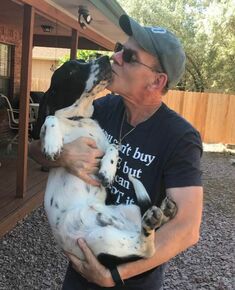 All that changed on September 24, 2014, when Doug Rae was hired to be the new shelter director following a national search. Doug had previously managed shelters in Indianapolis, Philadelphia, Maryland and Phoenix and had most recently served as the executive director of the Animal Rescue League of Southern Rhode Island. Doug changed the culture of the shelter on his first day on the job. During his first two weeks he met with dozens of residents, business owners and elected officials. He had one-on-one meetings with every employee and met with past and present volunteers. As Doug wrote in a guest column which appeared in the Daily Record: “I heard sadness, disappointment, hatred and rage. Some folks were brought to tears. Tears for the animals. Though many offered me reasons why the shelter was where it was back then, by the end of our talks, those excuses were now in the rearview mirror never to be heard from again. Instead, we quickly came together and just did it. Well, that's not entirely accurate. Some people not able to embrace the new changes were escorted off the bus at the next stop.” Doug described the change in the shelter as like walking in a flipping a light switch. A shelter which had previously destroyed approximately 50 percent of the animals stopped doing that on the day Doug took over as the director. In his three months, the shelter saved 96 percent of all the animals that came into the building. That number has risen over the last four years. In October 2017, the shelter received the Henry Bergh Achievement Award from the No Kill Advocacy Center and received a proclamation certificate from the President of the Colorado State Senate. Both awards are proudly displayed in the lobby of the shelter. In February of 2018, I approached Doug about doing a video project to highlight the wonderful work being done at his facility. I had hopes of legally clearing a song from a wonderful talent whom I had never worked with before. We got the news in June that we were legally cleared to use “The Other Road” from David Hodges’ CD “The December Sessions, Volume 4.” I was thrilled. It took months for the project to come together, but we were able to finish it recently. Now that the video work is completed, Doug was gracious enough to participate in a Q&A about his facility and about his philosophies. Q: How long have you managed the Humane Society of Fremont County and what can you tell us about your work background that prepared you for the job? A: My first job in animal sheltering was as the Shelter Operations Manager for Maricopa County Animal Care & Control. Back then (2003), this agency took in 62,000 animals a year spread out over three shelters, two locations which I managed. I was in Phoenix for three years. I then moved on to become the Director of Operations at the open admission Harford County Humane Society taking in 6,000 animals a year. This was the first job I was able to have a direct and significant effect on the save rate, since I had the full support of the Executive Director to make any changes that I wanted too. We saved upwards of 97% of the animals. During my time at Harford Humane I was being recruited for jobs across the Country, one in particular, a #2 job in Philadelphia. I refused this job twice but the third request came from Nathan Winograd who asked me to do it “for the movement.” I accepted Nathan’s proposal and became the Chief Operating Officer for Philadelphia Animal Care & Control, taking in 30,000 animals a year. I was only in Philly for about 1 ½ years before we lost the contract to the Philadelphia SPCA after the PACCA Board voted to not put a bid in for the 2009 contract. The highest we got the Philly save rate was a disappointing 78%. As the # 2 in command reporting to the CEO, I take full responsibility for not achieving a higher save rate. But I do wish I had complete control of the Philly agency to do everything that I wanted to do. Our contact with the City expired December 31, 2008. In January 2009 I was named the Executive Director for Indianapolis Animal Care & Control. An agency taking in 18,000 animals a year. Between battling the Union President and a City County Councilor that proposed a City-wide BSL banning Pits [pit bull type dogs] from Indianapolis, a proposal which I publicly would not support, I knew that my time in Indy was at best, limited. Especially after my boss, the Director of Public Safety for the City agreed with me to not publicly support the BSL proposal. But even through the many political battles, my boss supported everything that I was doing, supported my decisions, and battled the Union and the City Councilors along side of me. As soon as my boss resigned due to Parkinson’s disease, his acting replacement (a good friend of the Union President and the BSL councilor) told me to start looking for a job. I refused to resign and instead I was fired in a very public way. I then took a Director job at a shelter in Rhode Island to be close to my ailing mom; who would pass in February 9, 2012. This was the first shelter that was not open admission and the first shelter that I hated working in. After many disagreements with two Board member, I left the agency. I would leave animal welfare due to politics that had nothing to do with saving lives or the animals. Instead, the politics had everything to do with massaging the human ego. Whether it was an elected official, a Union President, a Board member, or others, I had enough. So I turned my back on animal sheltering and went back to retail for almost one year. But I missed working for the animals. And although my wife was adamant that I not take another job in animal welfare, after much discussion, Lynn agreed that I could accept another sheltering job, but only if she was close to family in Colorado. I would soon learn about the Fremont Humane Director opening in COI quickly applied. When a Board member said to me during a face-to-face interview, “Doug you have no idea what the new Director is walking into here.” I simply replied, “Respectfully, I know exactly what the Director is walking into and I know exactly what they need to do.” One last thing, and this is a story in itself, my background prior to entering animal sheltering in 2003 was in retail. I was a National Sales Director for the largest Specialty retailer in the nation and I was a Regional Sales Director for the largest Nutrition Supplement company in the nation. Q: What do you think the most important qualities are in shelter leadership to achieve the no kill model? A: Transparency. An animal shelter Director must be 100% honest in everything that he or she does. And I mean everything. Secondly. A Shelter Director must embrace a quality that puts animals first and treats them as individuals. In other words, the 3 week-old kitten is just as important as the 15 year old lab. The 6 year-old Pitty that people walk past day after day is just as important as the highly adoptable purebred Maltese. The moment someone justifies killing based on reckless opinions, (such as, nobody ever looks at that 6 yr-old Pitty, and because we need space we should put him down because he has had his chance) is the time for that Director to be relieved of his or her duties. Many Board members have little idea how to manage a shelter, what is involved in making life and death decisions, and how to correctly administer shelter finances. I have seen this first hand and I hear it quite frequently from other non-profit Directors. Having worked with some bat-shit crazy Board members over the years, and not that I’m planning on leaving Fremont Humane, but I would never accept a Director position in an animal shelter unless the Board grants me 100% control over day-to-day operations as the Fremont Humane Board did for me during our job interview. One reason why Fremont Humane achieved No-Kill over-night is because the Board allowed me do the job they hired me to do. Too many Board members hire a Shelter Director and then say, “here’s how we want you to do and here’s how we want you to do it.” That is just plain wrong. I read a blog that goes against everything that I just said, saying how the Board (and not the Director) should get the credit for a successful animal shelter. I can’t disagree any more with that articles premise. I know for a fact that I made a Fremont Humane Board member nervous during my interviews; especially when I asked for day-to-day operational control. It’s not easy for a Board to give up control like my current Board did, but Board’s that want 100% control end up micro-managing their director (and the agency) straight into the ground. And not just in animal welfare. I see Boards destroy other non-profits as well. Q: What are some of the most difficult challenges in managing a No Kill animal shelter? A: Fremont Humane receives 2 ½ times the national average for animal intakes and in 2014 our combined per capita was all of $1.07, while the national per capita average is $5.85. One would think that with these two challenges facing you daily, achieving No-Kill would be difficult if not impossible. Well my team proved the naysayers wrong. In our first three months we saved 97% of the animals. In our first year 94%, year two 96%, year 3 99% and last year we saved 96% of 100% of the animals. So any challenge outside of two above is negligible and certainly nothing that could ever get in the way of s shelter achieving No Kill status. Oh sure, there are several challenges a No-Kill shelter faces daily, but none that would ever justify killing an animal. When one of my managers comes to me and starts with, “Doug we have a problem.” I almost always say, “No we don’t…” Q: You’ve had tremendous success keeping animals alive who would have been destroyed in other shelters, particularly dogs who are stressed, anxious or afraid. How do you go about gaining the trust of those dogs and ensuring they do not degrade while in a shelter environment? A: Less than 1/4 of 1% of the dogs that arrived at Fremont Humane over the last 4 years are simply scared. Sure, they may act all sorts of aggressive, but they are scared, plain and simple. Even in an open admission shelter, these types of animals can and should be saved. So while receiving 2 ½ times the national average for intakes, in a shelter that is far too small for our area, and being $4.78 per person below the national average per capita funding level, if Fremont Humane can achieve No-Kill, anyone can. Gaining a dogs trust takes time. Sometimes it just happens, other times it can take weeks, maybe months. Like Louie, a dog that lived in my office for a few months and that didn’t trust a soul. But one day when lying on the floor of my office close to Louie, Louie had a break-through. Louie would soon be adopted. As was Amber and Sugar and so many other dogs that would have been killed on intake in some shelters, but instead they made it to my office where I worked with them at the shelter or in my house Identifying a shelter dog that requires space, and providing that the dog space that he or she needs, whether it be two days or two weeks or two months, is the most important thing we can offer a dog in an animal shelter. My kennel staff does this on a daily basis. I can’t ask for a better kennel staff than I currently have. The reason we are able to save so many “scared’ dogs? My kennel staff and what they do for these types of dogs. When I started at Fremont Humane past kennel staff was always getting bit. Not anymore. I don’t recall the last time a staffer was bitten by a dog in the kennels. Q: What would you say to other shelter directors or to animal shelter staff who are struggling to overcome challenges in order to keep more animals alive? A: Reach out to the community. The same community that Directors blame for the animals coming in their front door, the same community that Directors scold because the shelter “has to kill animals,” that community. And then reach out to rescues. Reach out to sister shelters. Reach out to everyone and anyone you think can help. And then reach down deep and ask yourself, why the hell are you are doing what you do? If you don’t have a good answer, then it’s time to find a new job. If you say you are in this line of work to save lives, but you are killing animals, then call someone that is saving lives and ask for their help. Way back in my first shelter I didn’t have all of the answers, but I did question everything happening around me. Why are we doing that? What’s the reason for this policy? Why would you want to kill that dog? I made a lot of enemies with my mouth in the early days, but it put people on notice. If you sit at your shelter desk and magically think everything will be okay just because you want to save lives, think again. Working animal sheltering is not rocket science, but it’s also not stress-free. Saving lives means many things to many people. To me, it means treating all animals as individuals and doing right by each and every animal that comes into your shelter. The naysayers can nay and say all they want. The truth is that no kill sheltering isn’t just possible. It is a higher calling and it is happening all around us in places like Fremont County, Colorado. The public did not change and suddenly become more responsible. The number of animals in the community did not change. What changed was the shelter leadership, making all the difference in the world to the community, the shelter employees and the animals in the facility. A time will come when all animal shelters are no kill facilities. How long it takes us to get to that point in our society is up to all of us. We hope you enjoy the video. Huge thanks to Grammy award winning artist, writer and producer David Hodges and the management team at Milk & Honey Music (Lucas Keller and Nic Warner) for allowing us to use this wonderful song from Volume 4 of the December Sessions (available on Amazon, iTunes and Spotify.) |
AuthorI am an animal welfare advocate. My goal is to help people understand some basic issues related to companion animals in America. Awareness leads to education leads to action leads to change. Archives
July 2024
Categories
All
image courtesy of Terrah Johnson
|

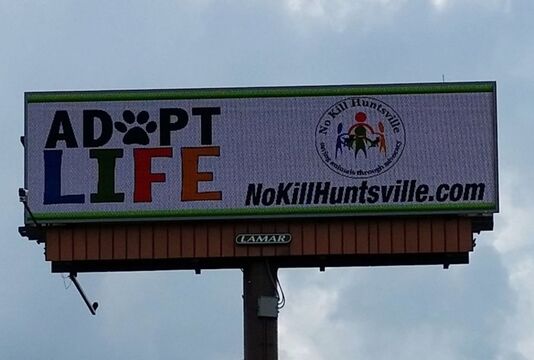





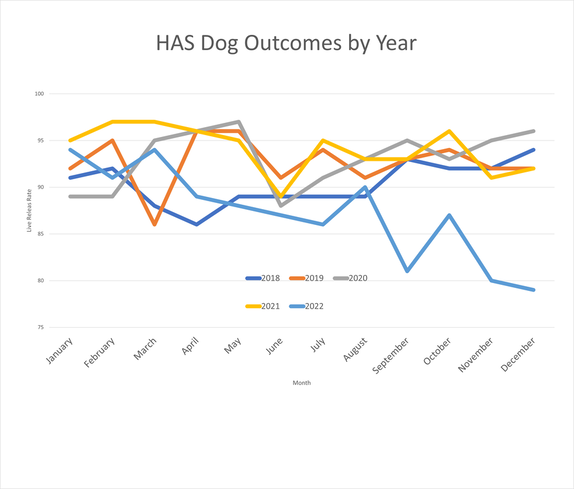
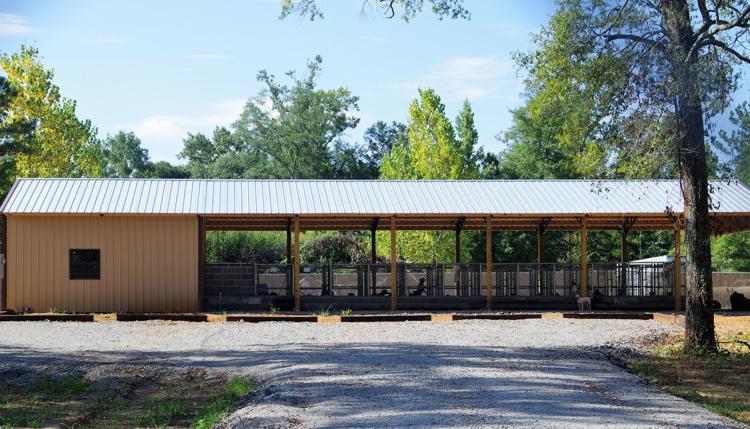
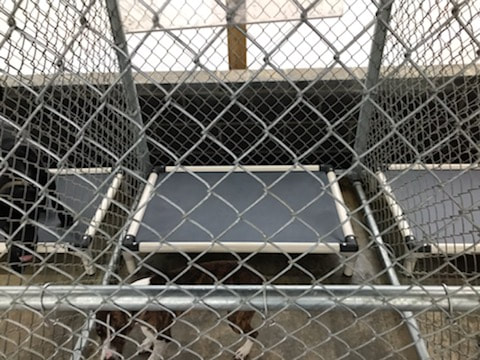
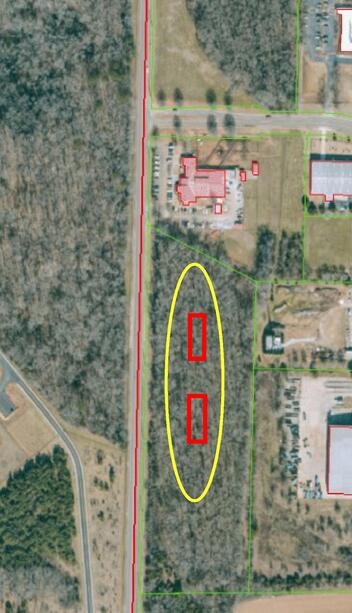
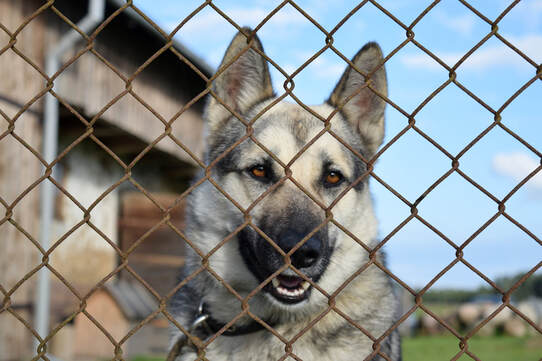



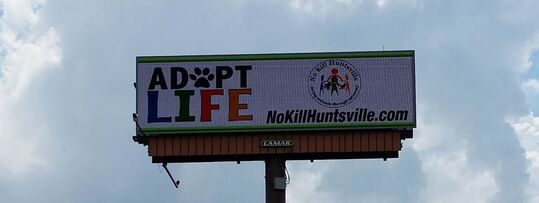







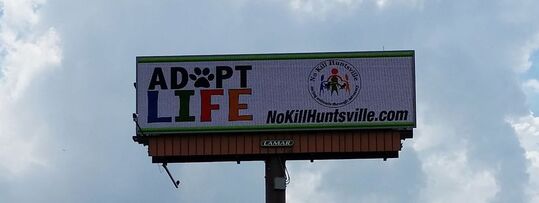
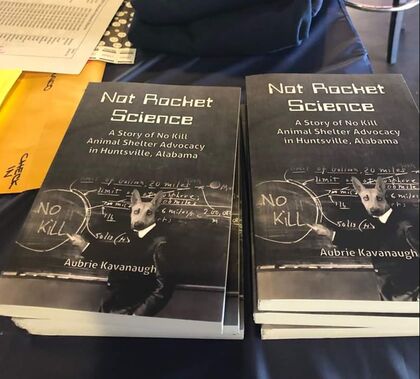
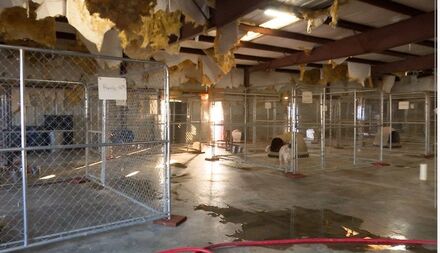
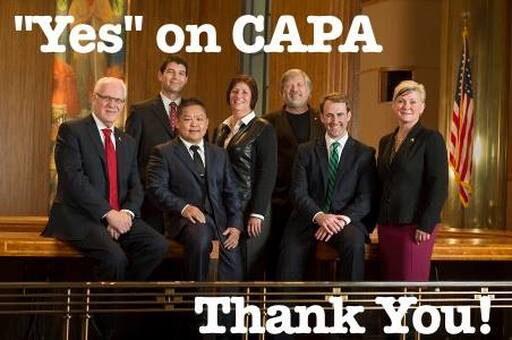
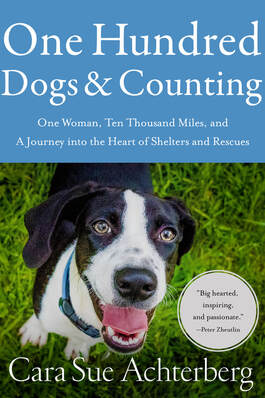

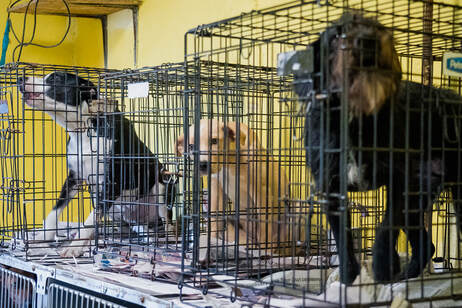
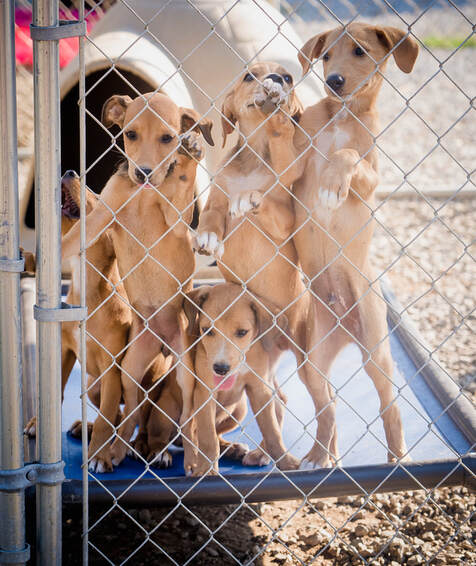
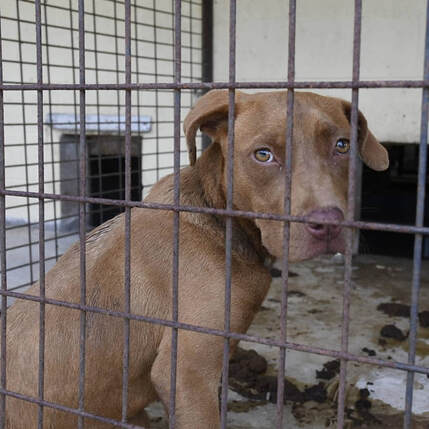
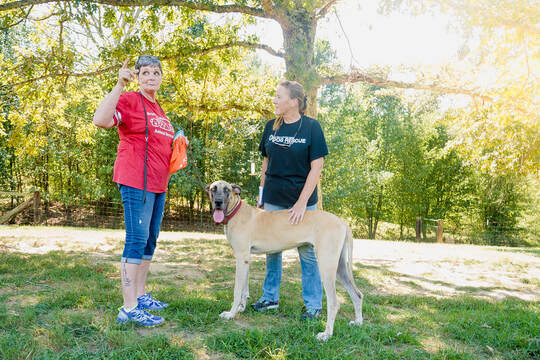
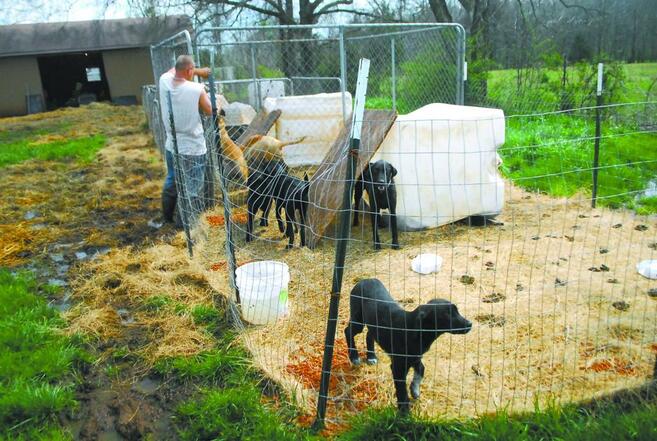
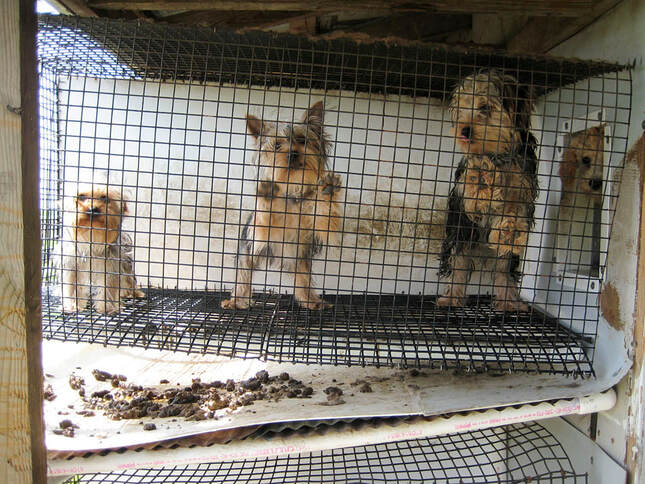

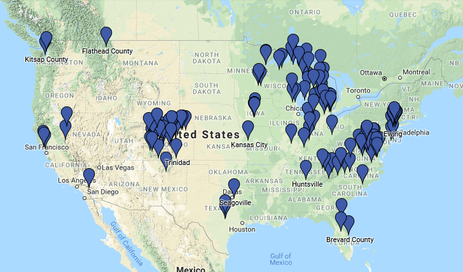
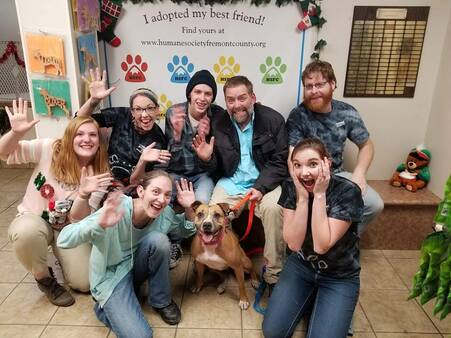
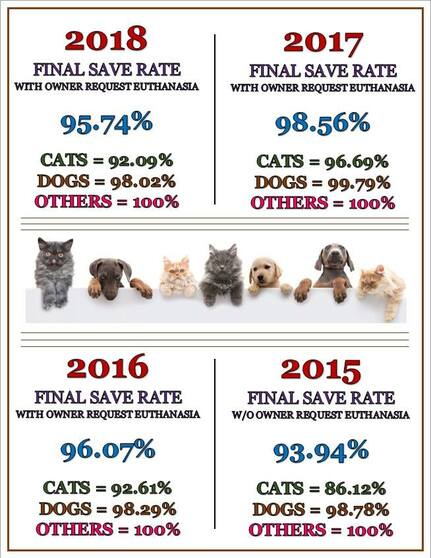
 RSS Feed
RSS Feed